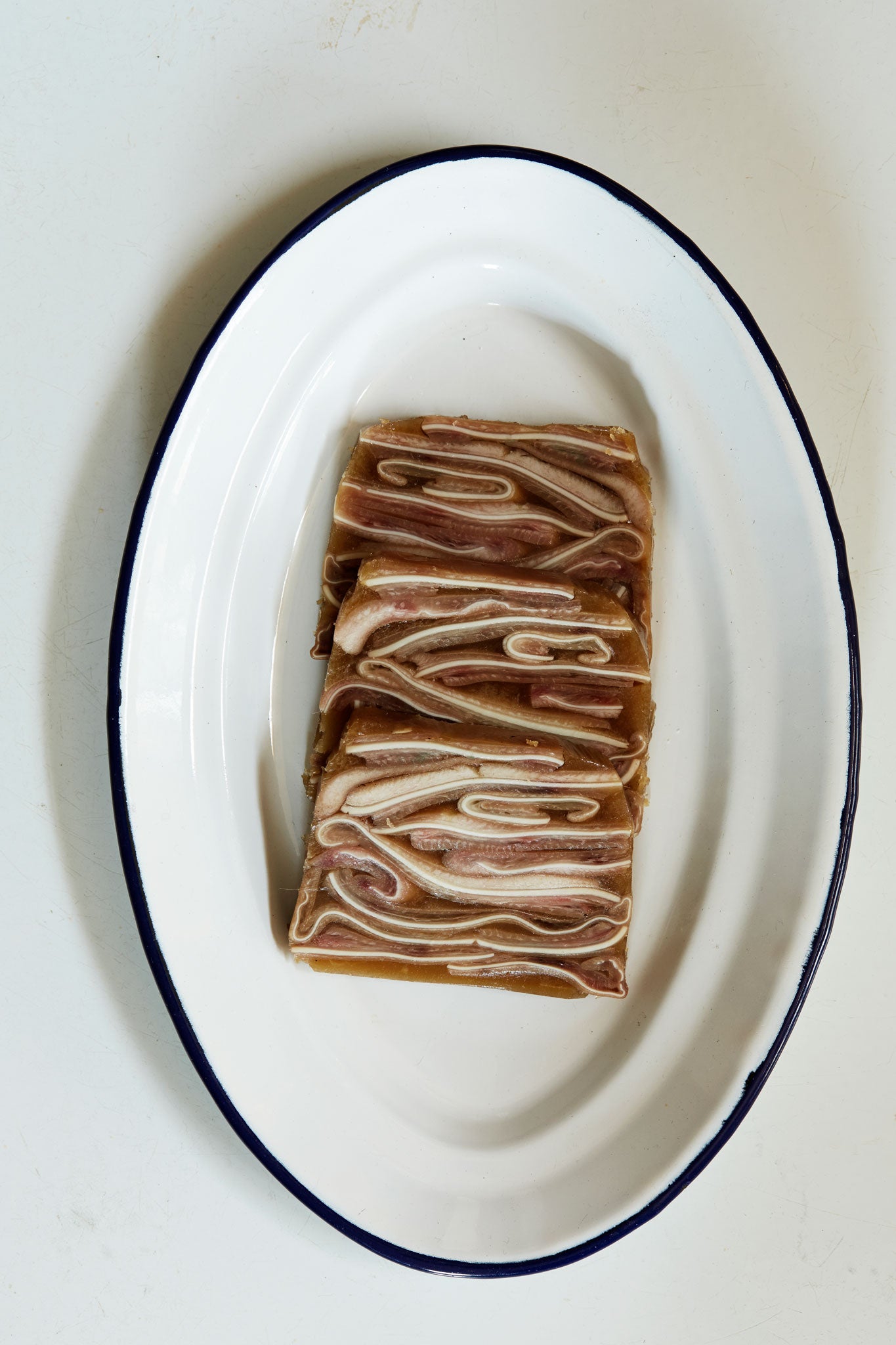This is as close as it gets to turning a sow's ear into a silk purse says Fergus.
One could be forgiven for thinking of ears as rubbery things, not blessed with much culinary potential. Well, think again.
Pigs' ears are not expensive so don't be shy; ask your butcher, who should have no problem getting them, as where there are pigs there must be ears.
You can use this as a starter sliced, or cut it into cubes and serve it as a snack on sticks with mustard or pickles, such as gherkins.
12-14 pigs' ears, cleaned preferably by your butcher with any remaining hair shaved off with a razor
Pigs' trotters, cleaned
2 onions, peeled, halved and roughly chopped
2 carrots, peeled and roughly chopped
2 leeks, cleaned and roughly chopped
2 sticks of celery, washed and roughly chopped
1 head of garlic, halved
A bouquet garni
Black peppercorns
Enough very light chicken stock to cover the above ingredients (about 2 litres)
Wash the ears thoroughly and soak in fresh water with a couple of handfuls of salt for a day. Wash the ears off in fresh cold water and cut them in half.
Put the ears and trotters in a pan with the stock, all the vegetables and the bouquet garni, bring to the boil and simmer for about 3 hours or until the ears and trotters are tender (if you have a pressure cooker it will take half the time).
After the allotted time, carefully take out the ears, making sure they're cool enough to handle. Next, remove any hard cartilage then layer them in a terrine mould or similar-sized rectangular container or bread tin lined with clingfilm.
Strain the cooking liquid, discard the vegetables and put the remaining liquid and trotters into a clean pan. Place on the stove top and simmer until reduced to the point where it will yield enough to just cover the ears. Check for seasoning – remember it is going to be served cold, which always dulls the flavour.
Pour the reduced liquid over the ears, cut a bit of cardboard to fit in your mould, fold the clingfilm over the ears and place the cardboard on top. Apply weights to it – tins of tomato and so on – allow to cool, then leave in the fridge overnight. Next day, it is ready to eat.
To serve, cut into 1cm-thick slices or cubes as in the picture above.
Subscribe to Independent Premium to bookmark this article
Want to bookmark your favourite articles and stories to read or reference later? Start your Independent Premium subscription today.


Join our commenting forum
Join thought-provoking conversations, follow other Independent readers and see their replies